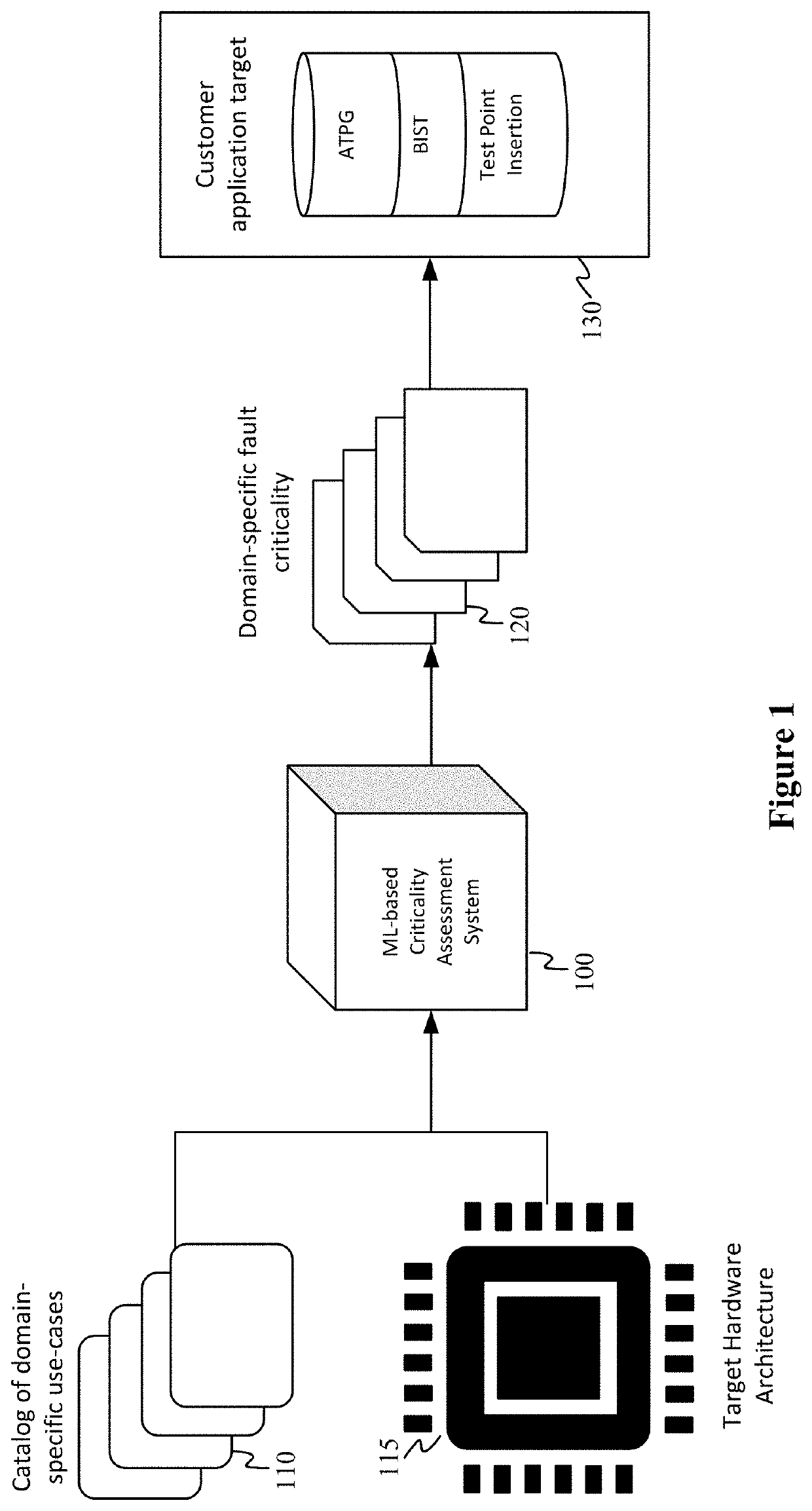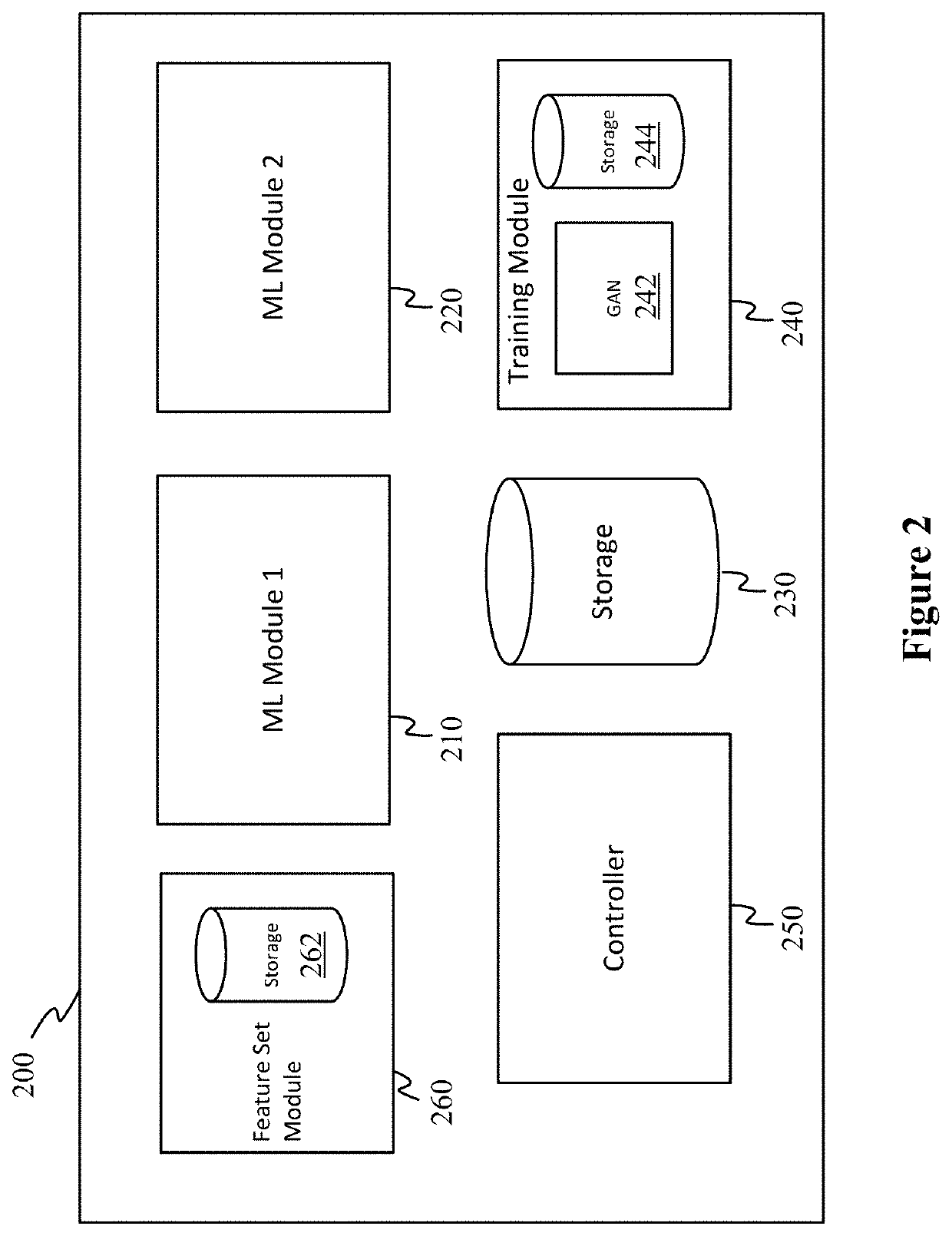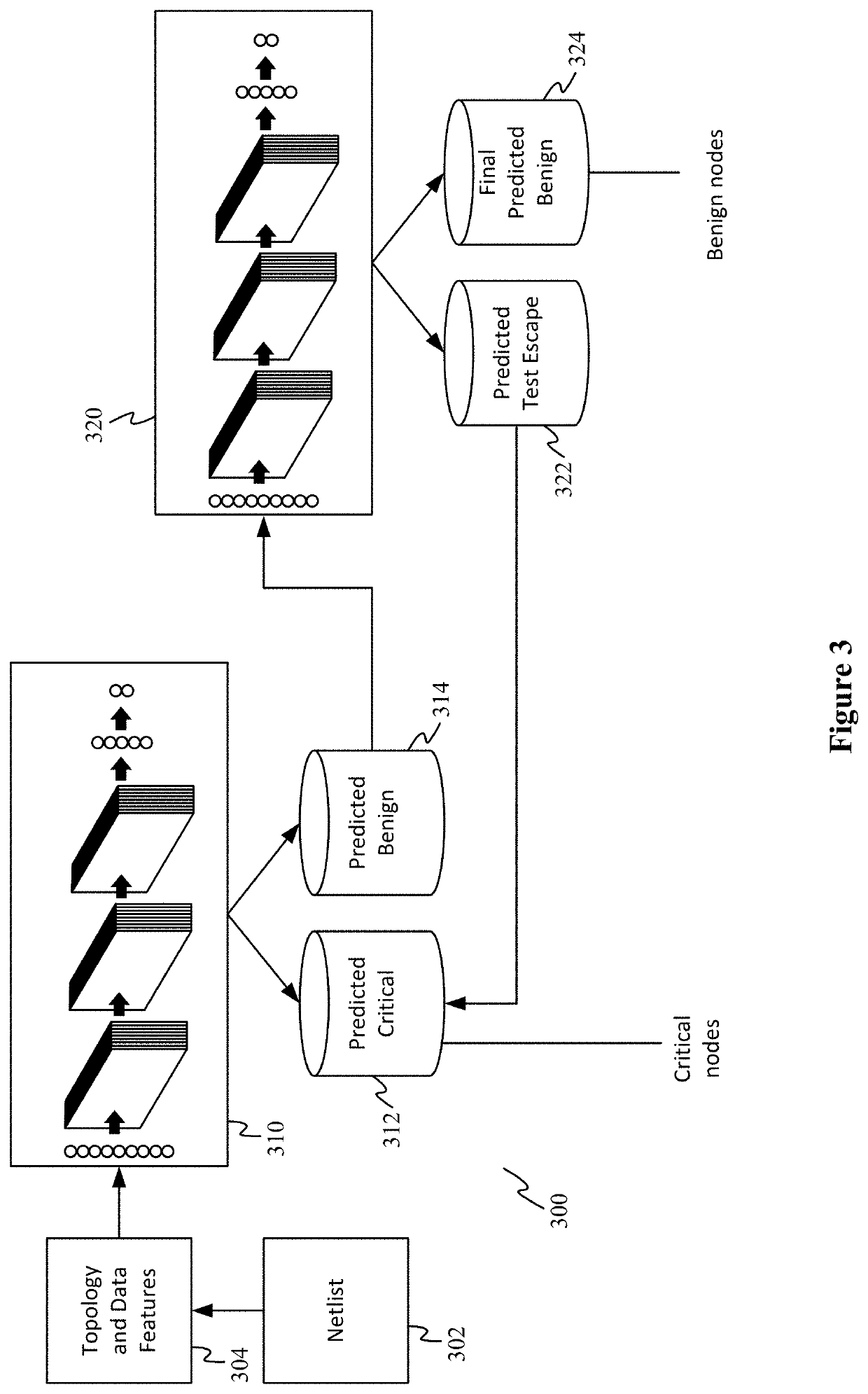Evaluating functional fault criticality of structural faults for circuit testing
a functional fault and structural fault technology, applied in the field of circuit testing, can solve the problems of reducing the efficiency of circuit testing, reducing the accuracy of fault criticality evaluation, so as to reduce the overhead of circuit testing, accurately evaluate fault criticality, and increase the size of training data.
- Summary
- Abstract
- Description
- Claims
- Application Information
AI Technical Summary
Benefits of technology
Problems solved by technology
Method used
Image
Examples
Embodiment Construction
[0022]Techniques and systems are provided to minimize overhead for circuit testing—both during simulation and hardware fault testing. Fault testing can be computationally and temporally expensive but is required in most cases to ensure circuit functionality. Machine learning is used to evaluate fault criticality for circuit testing by predicting criticality of faults without requiring simulation of the entire circuit. As described herein, machine learning is used to evaluate fault criticality for any node in any part of a circuit based on a small sample of the circuitry. GANs can be used to supplement the training process for the machine learning models in order to increase the size of training data. Advantageously, through the described techniques and systems that use a small sample of the circuitry, it is possible to conduct a more computationally and temporally efficient fault testing.
[0023]FIG. 1 illustrates a representational diagram of a process flow for evaluating fault criti...
PUM
 Login to View More
Login to View More Abstract
Description
Claims
Application Information
 Login to View More
Login to View More - R&D
- Intellectual Property
- Life Sciences
- Materials
- Tech Scout
- Unparalleled Data Quality
- Higher Quality Content
- 60% Fewer Hallucinations
Browse by: Latest US Patents, China's latest patents, Technical Efficacy Thesaurus, Application Domain, Technology Topic, Popular Technical Reports.
© 2025 PatSnap. All rights reserved.Legal|Privacy policy|Modern Slavery Act Transparency Statement|Sitemap|About US| Contact US: help@patsnap.com



